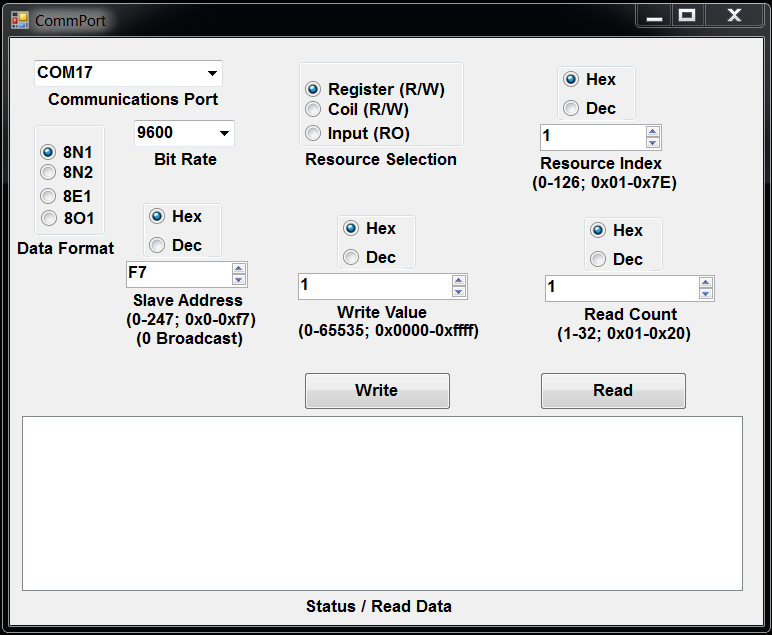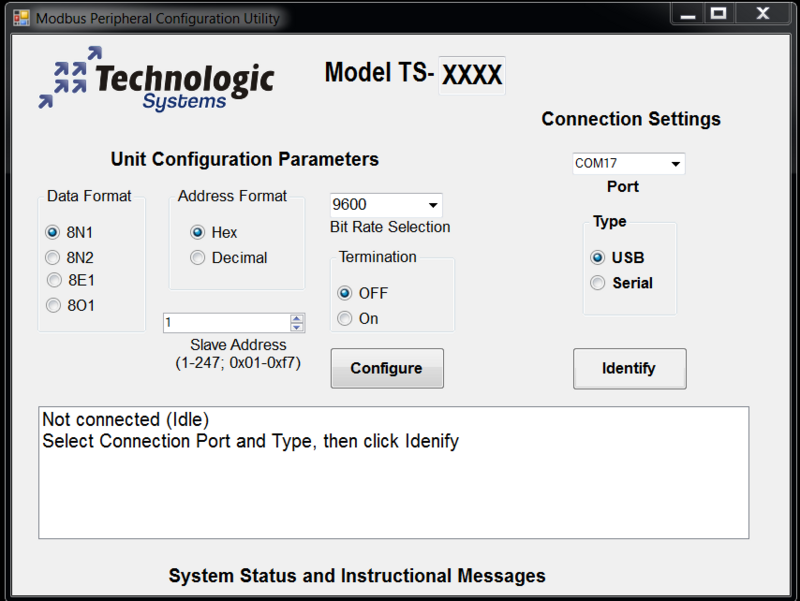Modbus windows utilities: Difference between revisions
No edit summary |
No edit summary |
||
| Line 4: | Line 4: | ||
[[File: | [[File:TsModbusAccess.PNG|800px]] | ||
Revision as of 13:46, 18 December 2014
Modbus Windows register access program: ModbusDeviceAccess
These programs are used to perform accesses to the Modbus devices register set. It allows the writing of arbitrary hex data to any hex register address one at a time and the reading of blocks of arbitrary data from any hex register addres displayed in hex, signed, or unsigned decimal.
Modbus Windows device configuration program: ModbusDeviceConfigure
This program is used to perform configuration of a Modbus device. On older modbuc devices these settings (Slave address, Communications bit rate and data format, termination) would have been performed via DIP switches. This configuration information is stored in non-volatile memory on the device.
The primary difference in usage of these utilities depends on the hosting platform.
On SBC products using the XUART communications devices, the -c switch and parameter does not need to be specified, since the default communications port is correct.
On the TS-7670 with a standard UART communications device, the '-m 7670' switch should be specified. This allows the proper hardware setting for the RS-485 port to be utilized.
On SBC products with a host USB port for communications, the -c switch should be specified and paramater should be the USB to Serial communication device, which is generally '/dev/ttyACM0'. The '-s f6' switch and parameter is required since the unit operates at a different slave address when operating via USB. The bit rate does not need to be specified, since the USB port will operate at the fastest rate possible (up to approximately 1000000 bps).

